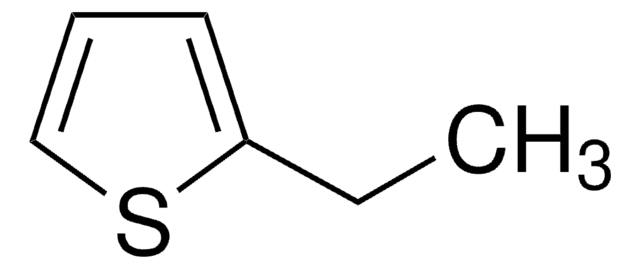95440
2-Ethyl-5-phenylisoxazolium-3′-sulfonate
purum, ≥97.0% (T)
Synonym(s):
Woodwards reagent K
Sign Into View Organizational & Contract Pricing
All Photos(1)
About This Item
Empirical Formula (Hill Notation):
C11H11NO4S
CAS Number:
Molecular Weight:
253.27
Beilstein:
4149224
EC Number:
MDL number:
UNSPSC Code:
12352005
PubChem Substance ID:
Recommended Products
grade
purum
Assay
≥97.0% (T)
mp
216-219 °C (dec.)
SMILES string
CC[n+]1ccc(o1)-c2cccc(c2)S([O-])(=O)=O
InChI
1S/C11H11NO4S/c1-2-12-7-6-11(16-12)9-4-3-5-10(8-9)17(13,14)15/h3-8H,2H2,1H3
InChI key
MWOOKDULMBMMPN-UHFFFAOYSA-N
Other Notes
Modification of carboxylic groups in enzymes; Coupling reagent for peptide synthesis
replaced by
Product No.
Description
Pricing
Storage Class Code
11 - Combustible Solids
WGK
WGK 3
Flash Point(F)
Not applicable
Flash Point(C)
Not applicable
Choose from one of the most recent versions:
Certificates of Analysis (COA)
Lot/Batch Number
Don't see the Right Version?
If you require a particular version, you can look up a specific certificate by the Lot or Batch number.
Already Own This Product?
Find documentation for the products that you have recently purchased in the Document Library.
A A Komissarov et al.
The Journal of biological chemistry, 270(17), 10050-10055 (1995-04-28)
Woodward's reagent K (WRK) completely inactivated Escherichia coli uridine phosphorylase by reversible binding in the active site (Ki = 0.07 mM) with subsequent modification of a carboxyl (k2 = 1.2 min-1). Neither substrate alone protected uridine phosphorylase from inactivation. The
M S Saini et al.
Biochimica et biophysica acta, 568(2), 370-376 (1979-06-06)
Treatment of homogenous human prostatic acid phosphatase (orthophosphoric-monoester phosphohydrolase (acid optimum), EC 3.1.3.2) with low concentrations of Woodward's reagent K (N-ethyl-5-phenylisoxazolium-3'-sulfonate) leads to a rapid loss of enzymic activity. The rate of inactivation of the enzyme is reduced in the
P Bustos et al.
Journal of protein chemistry, 15(5), 467-472 (1996-07-01)
The reaction of Woordward's reagent K (WRK) with model amino acids and proteins has been analyzed. Our results indicate that WRK forms 340-nm-absorbing adducts with sulfhydryl- and imidazol-containing compounds, but not with carboxylic acid derivatives, in agreement with Liamas et
P Paoli et al.
The Biochemical journal, 328 ( Pt 3), 855-861 (1998-02-07)
The organ common-type (CT) isoenzyme of acylphosphatase is inactivated by Woodward's reagent K (WRK) (N-ethyl-5-phenylisoxazolium-3'-sulphonate) at pH6.0. The inactivation reaction follows apparent pseudo first-order kinetics. The dependence of the reciprocal of the pseudo first-order kinetic constant (kobs) on the reciprocal
Hassan Faridnouri et al.
Bioelectrochemistry (Amsterdam, Netherlands), 82(1), 1-9 (2011-07-01)
This work describes the reaction mechanism for chemical modification of tyrosinase by Woodward's Reagent K and its covalent attachment to a glassy carbon electrode. The spectrophotometric studies revealed that the modification does not cause a significant structural change to tyrosinase.
Our team of scientists has experience in all areas of research including Life Science, Material Science, Chemical Synthesis, Chromatography, Analytical and many others.
Contact Technical Service








